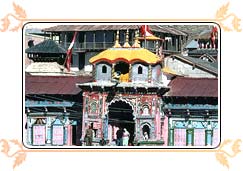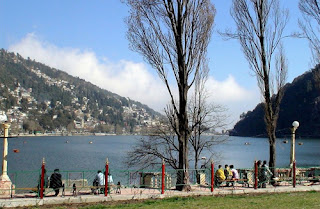India Unveiled: A warm up, a teaser following up to your adventure in Kullu ManaliIndia offers an alluring invitation for every traveler to indulge in its picture perfect views of snow clad Himalayas in North, swirling sands in Rajasthan play a charismatic veil of monuments and forts waiting to seduce a lonely traveler with their incredible beauty and artistry; sandy dunes along the crystal clear waters of beaches in south provide an ultimate source of Vitamin SEA. And after you are finished up with your adventures in north set yourself free on a peaceful trail in a canoe moving swiftly on the pristine backwaters of Kerala.
An Ultimate Adventurer’s Trove: Kullu ManaliBut if you are a crazy adventurer then please pack-up your adventure gear and board a bus plying to Kullu Manali in North India. Kullu Manali is a comfortable 10 hours journey from New Delhi. It is well connected to the rest of India with smooth National Highways; making the journey for travelers hassle free. These are the twinlet towns in the mesmerizing land of gods “Himachal Pardesh, India”.
Manali, situated at an altitude of 6000 feet, is a renowned hill station in India. According to a fabled story, when whole world drowned in the catastrophic floods, arose a place of unparalleled natural beauty? It was Manali here the life prospered again.
Manali offers a rare treat for your eyes as every shot of its natural beauty presents an ultimate picture. Miles away from those busy streets of city life, here’s a chance for you to walk through the narrow alleys in dense forests, exotic flowers and gurgling streams. Manali is also a vital transcending point for interesting trek routes to places like Rohtang Pass, Lahaul and Spiti.
Hassle Free
Manali seems to be a natural beauty embellished with sophistication of modern world. You can avail the rare comfort of venturing without a wallet, just use your plastic money at any of the nearest ATMs or swipe your credit card as all the leading stores, hotels and luxury resorts accept VISA cards. Everything seems to be so spontaneous and hassle free here, there's no hiccups or hurdles getting anywhere around the town. Manali is well networked with the rest of region through its perennial flow of taxis, buses, and flights. Manali offers an exquisite claque of hotels and stays that blends both luxury and affordability for travelers. At high end, you can embrace the luxuries of a five star hotel, for shallow pockets there are much cheaper rooms available at a price of Rs 700 a night. The forest cottages provides a unique option for traveler’s looking to spend a night talking to stars in piercing scents of deodar trees with prices staggering low at Rs 1500 a night.
In the Search for Peace and SolitudeYou can search for solitude in its tranquil forest resorts that offers complete seclusion from outer World. May be that’s the reason writer's find a mystic solace in its mesmerizing deodar forests that ignites oodles of literary wonders. The towns nearby embraces a rich elegance in their laid back culture, these regions looms around a mysterious lifestyle, by living a self contented life totally unknown to modern world's. Just follow a lonely path through a forest near your resort and it will lead you to a quaint village, spend some time talking with local people and you will feel their intense warmth and gesture for outsiders. The people here treat their guest’s like gods.
Adventure Sports In Kullu ManaliAfter exploring the local naturals you must be feeling thirsty for something extraordinary, surprising or may be adventurous. The toughest trekking trails along the rocky terrains of Rohtang valley will surely let you relive the dormant athlete in you. Imagine flying like a bird sprawling your wings over the world's eyes, this is not a dream, no more, experience this virtual to reality by Paragliding on the breathtaking valley of Solang. Don't miss a rare chance of gyrating the turbulent waters of river beas on a spunky kyak. For fishing enthusiasts, Katrain, Raison, Kasol, Larji, and Nagar are some of the ideal places for trout.
A unique confluence of natural highs: Kullu Manali India
India Unveiled: A warm up, a teaser following up to your adventure in Kullu Manali
India offers an alluring invitation for every traveler to indulge in its picture perfect views of snow clad Himalayas in North, swirling sands in Rajasthan play a charismatic veil of monuments and forts waiting to seduce a lonely traveler with their incredible beauty and artistry; sandy dunes along the crystal clear waters of beaches in south provide an ultimate source of Vitamin SEA. And after you are finished up with your adventures in north set yourself free on a peaceful trail in a canoe moving swiftly on the pristine backwaters of Kerala.
An Ultimate Adventurer’s Trove: Kullu Manali
But if you are a crazy adventurer then please pack-up your adventure gear and board a bus plying to Kullu Manali in North India. Kullu Manali is a comfortable 10 hours journey from New Delhi. It is well connected to the rest of India with smooth National Highways; making the journey for travelers hassle free. These are the twinlet towns in the mesmerizing land of gods “Himachal Pardesh, India”.
Manali, situated at an altitude of 6000 feet, is a renowned hill station in India. According to a fabled story, when whole world drowned in the catastrophic floods, arose a place of unparalleled natural beauty? It was Manali here the life prospered again.
Manali offers a rare treat for your eyes as every shot of its natural beauty presents an ultimate picture. Miles away from those busy streets of city life, here’s a chance for you to walk through the narrow alleys in dense forests, exotic flowers and gurgling streams. Manali is also a vital transcending point for interesting trek routes to places like Rohtang Pass, Lahaul and Spiti.
Hassle Free
Manali seems to be a natural beauty embellished with sophistication of modern world. You can avail the rare comfort of venturing without a wallet, just use your plastic money at any of the nearest ATMs or swipe your credit card as all the leading stores, hotels and luxury resorts accept VISA cards. Everything seems to be so spontaneous and hassle free here, there's no hiccups or hurdles getting anywhere around the town. Manali is well networked with the rest of region through its perennial flow of taxis, buses, and flights. Manali offers an exquisite claque of hotels and stays that blends both luxury and affordability for travelers. At high end, you can embrace the luxuries of a five star hotel, for shallow pockets there are much cheaper rooms available at a price of Rs 700 a night. The forest cottages provides a unique option for traveler’s looking to spend a night talking to stars in piercing scents of deodar trees with prices staggering low at Rs 1500 a night.
In the Search for Peace and Solitude
You can search for solitude in its tranquil forest resorts that offers complete seclusion from outer World. May be that’s the reason writer's find a mystic solace in its mesmerizing deodar forests that ignites oodles of literary wonders. The towns nearby embraces a rich elegance in their laid back culture, these regions looms around a mysterious lifestyle, by living a self contented life totally unknown to modern world's. Just follow a lonely path through a forest near your resort and it will lead you to a quaint village, spend some time talking with local people and you will feel their intense warmth and gesture for outsiders. The people here treat their guest’s like gods.
Adventure Sports In Kullu Manali
After exploring the local naturals you must be feeling thirsty for something extraordinary, surprising or may be adventurous. The toughest trekking trails along the rocky terrains of Rohtang valley will surely let you relive the dormant athlete in you. Imagine flying like a bird sprawling your wings over the world's eyes, this is not a dream, no more, experience this virtual to reality by Paragliding on the breathtaking valley of Solang. Don't miss a rare chance of gyrating the turbulent waters of river beas on a spunky kyak. For fishing enthusiasts, Katrain, Raison, Kasol, Larji, and Nagar are some of the ideal places for trout.
Kullu and Cannabis
Kullu is well known for its temples, rich crafts, finely embossed shawls and cultural festivals that enliven the intense fervor of localites for their respected deities and age old customs. You can feel the chilling winds whistling across the vergant expanse of apple orchards and fruit gardens nearby. Kullu is also called "The Fruit Basket of North India" for its abundant produce of apple and plum. But one thing that adds an illicit profanity to Kullu is "Cannabis" or Charas. It's easy and it's accessible here, thus eluding a lot of foreigners that come here in search for those intimate moments in narcotic-highs. They love lurking the narrow alleys through wild cannabis. A confluence of regions enthralling beauty with celestial highs of Charas, it's a bumper bonanza for tourists and they don't seem to miss the brigade.
Places to visit
Sultanpur Palace
This palace is hot throbbed by art lovers looking to plunge into the vibrant colours of kullu style miniature paintings. This style showcases the simple laid-back cultures and untouched natural beauty of the region.
Manikaran Hot spring baths
After your grueling battles with the naturals of Kullu Manali, it's time to satiate your mind body and soul with rejuvenating bath at hot springs in Manikaran. It's amazing how local people cook their food by the spring and there are separate baths for men and women.
Other places of Sheer Scenic Beauty
The road to Kullu Manali runs along the turbulent waters of river Beas. It's flanked by lofty mountains and spreading forests. On this road is Katrain, famous for its fruit orchards and its trout hatchery. Near Katrain, across the river, is a small town Naggar, which came into being by the famous Russian painter, Nicholas Roerich, whose artworks can be seen here. Jagatsukh, the biggest village of the district on the Naggar-Manali road, is popular for its annual Chacholi Yatra.
Best Time to Visit
The best time to be in Kullu Manali is from April-October when summers are at their crest and winters to follow. The whole business activities, hotels, rest houses, shops come to a stand still with winter seasons. The vibrant towns go into a state of hibernation after a dense snowfall each year. But with the onset of April month the whole town seems to be reignited in same old legendary charms.How to Get There
Kullu Manali is well connected with perennial network of buses, trains and flights that run here throughout the year, thus making these sleepy towns alive in summers, when the roads are busy and markets at smiles with flourishing tourism industry. There are daily flights with Jagson Airways from Delhi to the Kulu Valley's Bhuntar airport which is 10 km. from Kullu town where taxis/buses are available. The closest narrow gauge railhead is at Jogindernagar, 95 km. from Kullu. By road, the distance via Mandi is 530 km. and from Shimla this is 240 km. From Delhi and Shimla, luxury buses ply to Kullu.
Conducted Tours
Kullu is well known for its temples, rich crafts, finely embossed shawls and cultural festivals that enliven the intense fervor of localites for their respected deities and age old customs. You can feel the chilling winds whistling across the vergant expanse of apple orchards and fruit gardens nearby. Kullu is also called "The Fruit Basket of North India" for its abundant produce of apple and plum. But one thing that adds an illicit profanity to Kullu is "Cannabis" or Charas. It's easy and it's accessible here, thus eluding a lot of foreigners that come here in search for those intimate moments in narcotic-highs. They love lurking the narrow alleys through wild cannabis. A confluence of regions enthralling beauty with celestial highs of Charas, it's a bumper bonanza for tourists and they don't seem to miss the brigade.
Places to visit
Sultanpur Palace
This palace is hot throbbed by art lovers looking to plunge into the vibrant colours of kullu style miniature paintings. This style showcases the simple laid-back cultures and untouched natural beauty of the region.
Manikaran Hot spring baths
After your grueling battles with the naturals of Kullu Manali, it's time to satiate your mind body and soul with rejuvenating bath at hot springs in Manikaran. It's amazing how local people cook their food by the spring and there are separate baths for men and women.
Other places of Sheer Scenic Beauty
The road to Kullu Manali runs along the turbulent waters of river Beas. It's flanked by lofty mountains and spreading forests. On this road is Katrain, famous for its fruit orchards and its trout hatchery. Near Katrain, across the river, is a small town Naggar, which came into being by the famous Russian painter, Nicholas Roerich, whose artworks can be seen here. Jagatsukh, the biggest village of the district on the Naggar-Manali road, is popular for its annual Chacholi Yatra.
Best Time to Visit
The best time to be in Kullu Manali is from April-October when summers are at their crest and winters to follow. The whole business activities, hotels, rest houses, shops come to a stand still with winter seasons. The vibrant towns go into a state of hibernation after a dense snowfall each year. But with the onset of April month the whole town seems to be reignited in same old legendary charms.How to Get There
Kullu Manali is well connected with perennial network of buses, trains and flights that run here throughout the year, thus making these sleepy towns alive in summers, when the roads are busy and markets at smiles with flourishing tourism industry. There are daily flights with Jagson Airways from Delhi to the Kulu Valley's Bhuntar airport which is 10 km. from Kullu town where taxis/buses are available. The closest narrow gauge railhead is at Jogindernagar, 95 km. from Kullu. By road, the distance via Mandi is 530 km. and from Shimla this is 240 km. From Delhi and Shimla, luxury buses ply to Kullu.
 I wish you Health...
I wish you Health...









